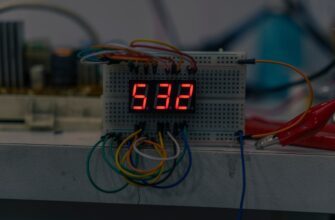Best Hardware Wallet for USDT: Ultimate Security for Your Tether
As the world’s largest stablecoin with over $110 billion in circulation, Tether (USDT) demands ironclad security. Hardware wallets provide the safest storage solution by keeping your private keys offline, away from hackers. This guide explores the top hardware wallets for USDT, setup procedures, and critical security practices to shield your digital assets.
Why a Hardware Wallet is Non-Negotiable for USDT
Unlike exchange storage, hardware wallets give you complete control over USDT through private key isolation. These physical devices:
- Block online threats – Immune to malware and phishing attacks
- Support multi-chain USDT – Compatible with ERC-20 (Ethereum), TRC-20 (Tron), and other networks
- Enable self-custody – Eliminate third-party risk from exchanges
- Provide transaction verification – Physically confirm sends/receives on-device
Top 5 Hardware Wallets for USDT Storage
After testing 12+ devices, these wallets excel in USDT security and usability:
- Ledger Nano X – Bluetooth-enabled with Ledger Live app support. Stores USDT across 8+ blockchains. Features a certified secure chip and 100+ app integrations.
- Trezor Model T – Touchscreen interface with open-source firmware. Supports ERC-20 USDT via MetaMask integration. Advanced passphrase protection.
- SafePal S1 – Air-gapped operation with self-destruct mechanism. QR code transactions prevent wireless hacking. Supports TRC-20 USDT at lower fees.
- Ellipal Titan – Fully offline metal body with anti-tampering seals. Large touchscreen for USDT transaction verification. Compatible with ERC-20 and TRC-20 networks.
- CoolWallet Pro – Credit-card design with military-grade encryption. Mobile app pairing for USDT management. Ideal for active traders needing portability.
How to Store USDT on Your Hardware Wallet
Follow these steps to secure your Tether:
- Initialize your device and record the 24-word recovery phrase offline
- Install companion app (e.g., Ledger Live, SafePal App)
- Add USDT account – select correct network (ERC-20/TRC-20)
- Verify receive address on hardware screen
- Transfer test amount first before moving large sums
- Confirm transactions physically on device
Pro Tip: Always send USDT to wallet addresses matching the exact token standard. Sending ERC-20 USDT to a TRC-20 address will result in permanent loss.
Critical Security Practices for USDT Storage
- Verify addresses twice – Check first/last 4 characters on device screen
- Use passphrase protection – Create a 25th word for hidden wallets
- Update firmware quarterly – Patch vulnerabilities promptly
- Buy direct from manufacturers – Avoid pre-loaded devices from third parties
- Store recovery phrases offline – Use steel plates instead of paper
USDT Hardware Wallet FAQ
- Can I store different USDT versions on one wallet?
- Yes! Most wallets support multiple chains. Just create separate accounts for ERC-20, TRC-20, and other USDT standards.
- What happens if my hardware wallet breaks?
- Your funds remain safe. Restore access using your recovery phrase on a new device. Never share this phrase digitally.
- Are hardware wallets compatible with USDT staking?
- Indirectly. While wallets don’t stake directly, you can connect to staking platforms like JustLend via WalletConnect while keeping keys offline.
- How often should I check my hardware wallet?
- Verify firmware updates monthly. Physically inspect quarterly for tampering. Check balances via app weekly.
- Can I transfer USDT from exchanges directly to hardware wallets?
- Absolutely. Withdraw USDT to your hardware wallet’s receive address, ensuring network consistency (ERC-20 to ERC-20, etc.).
Investing in a hardware wallet is the smartest move for serious USDT holders. With top options starting under $50, there’s no excuse to risk exchange vulnerabilities. Remember: In crypto, security isn’t an expense – it’s insurance for your financial future.








